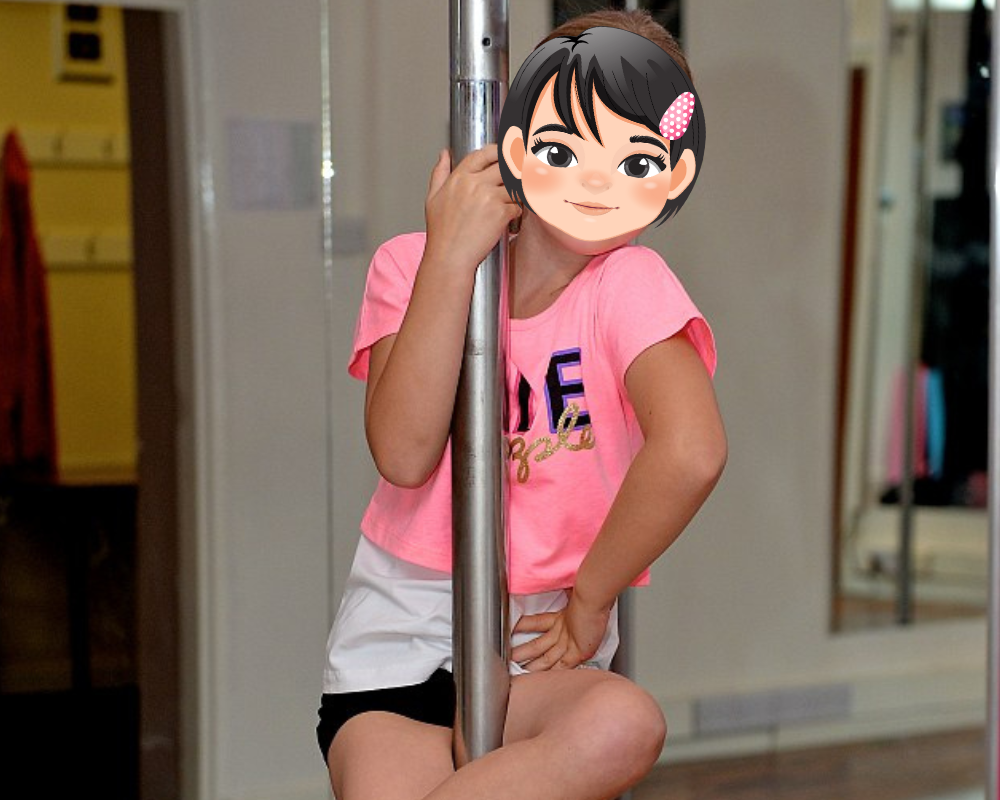Written by Edie Montana
It’s Friday afternoon and I arrive at the pole studio. I am early, and the people from the previous class are swarming about in the changing room, packing their things. The movements are chaotic and the noise is intense. It’s children’s voices; the changing room is full of little girls, from the age of six to nine years old. I assume they must have used the studio space for some flexibility class. Next Friday, I see them again. This time the pole instructor is in the hall talking to some moms, her curves sensually emphasized by skin-tight pole wear. I connect the dots. The kids are there to take pole classes.
You should keep in mind that the type of older customers who obsess over very young, “innocent” girls do not exist in a parallel reality – they are rather a product of our society and they mirror cultural and social dynamics. If that’s what they are looking for when they enter the strip club, it’s what they are attracted to in their everyday life.
A wave of emotions crosses my face. Discomfort comes first, then a bitter feeling on my tongue, and, finally, shock. As someone who has seen thousands of men drooling in front of a strip club stage, the oldest of them deliberately picking the innocent-looking eighteen-year-olds with braces for private dances, imagining kids on the pole is just disturbing. Yes, I said it – even though I am always nervous about putting certain information out there, because everything I say could be weaponised against my whole industry by anti-sex work advocates. You should keep in mind that the type of older customers who obsess over very young, “innocent” girls do not exist in a parallel reality – they are rather a product of our society and they mirror cultural and social dynamics. If that’s what they are looking for when they enter the strip club, it’s what they are attracted to in their everyday life. Those men could be your father, your husband, your uncle, your brother, your son. This kind of visual association is inevitable for me, a stripper, because pole dance is a explicitly sexualised sport – it was literally invented to arouse other people.
At the same time, a lot of pole studios have sanitized pole dance so much that it’s been made appropriate even for young girls. And that is disturbing too – in a different way. I immediately take the phone out of my bag and text my pole teacher and a bunch of my stripper colleagues. “I just saw children at the pole studio. Don’t you think it’s fucked up or is it just me? Maybe I am too old-fashioned.” After a fair amount of heated texting, I learnt from my teacher that there has been children’s pole competitions for a long time already. Some people I spoke to pointed out that it’s a little bit like gymnastics and other dance sports, but I don’t find this comparison is legitimate – gymnastics doesn’t have its roots in sex work. Pole dance has a very specific connotation that is cultural, social, and historical.
You might have heard strippers complain about the fact that pole dancing is getting gentrified, and that’s a matter of cultural appropriation too. Things like the hashtag #notastripper are still trending in the pole fitness community and, while pole dancing in a studio semi-naked in sky-high platform heels is advertised as empowering, doing the same in a strip club for a living is deemed as objectifying and vilifying. Many pole hobbyist still distance themselves from the adult industry by asserting that pole dance comes from Mallakhamb or Chinese pole, while using champagne and dollars for their shows, despite them being sex-worker symbols. Sex workers’ culture is fetishised and appropriated, but at the same time stigmatised.
As a matter of respect towards our ancestor strippers who spent long nights hustling drunk hooligans and arrogant business men to pay for their bills, I would be happy to see kids off our poles.
Studio owners and pole hobbyists are making money off a culture that was created by sex workers. It was 2019 when I had my first pole show outside of the strip club. We got booked to dance at one of Berlin’s biggest techno clubs. Considering how hard it is to herd a group of strippers, we put up an impressive show, combining pole with floor choreography and chair dance. The feedback from the booker was positive; yet, because we presented ourselves under the name “Berlin Strippers Collective”, several lamented that “the club had been turned into a brothel.” We didn’t get booked for any further show and, a couple of weeks later, we discovered from their social media that they had hired a pole fitness dancer instead.
If there are so many other similar dance types you can learn, like hoops, silks, gymnastics, what is the point of choosing pole for a child, disregarding its historical and social connotations? I am not advocating for pole studios to shut down or to pole hobbyists to stop dancing. I appreciate the opportunity to take classes in a studio to develop skills, and it makes me happy to see that the art crafted by my community is helping people to free their sexualities and to gain self-confidence and self-love. Pole dance belonged to sex workers and now it’s a sport: things change and evolve and that’s just life. Yet, I urge pole studios to listen to discussions about the appropriation of stripper culture in the pole industry.
As a final note, I want to stress that I don’t represent all sex workers. Some strippers couldn’t care less about this conversation, thinking that we have bigger problems than this – and they are not wrong about it. In general, if you are a pole hobbyist and you want to be an ally, my advice is that you listen to our opinions first, before shaping your own in this debate. Personally, the reason why this issue matters to me is that seeing those children at the pole studio served as a reminder of the constant erasure of our existence. As a matter of respect towards our ancestor strippers who spent long nights hustling drunk hooligans and arrogant business men to pay for their bills, I would be happy to see kids off our poles. At the end of the day, the core issue is not about children doing acrobatics on a pole. There is nothing inherently wrong with the practise itself, but at what cost does it come? Is it worth our erasure?
About the Author:
Edie Montana is a Berlin-based performer, writer, and sex worker activist. She is one of the co-founders of Berlin Strippers Collective and her work combines politics and activism with arts and performances to destigmatise sex work. Recurrent themes in her work are the adult industry, mental health, society, and religion.

